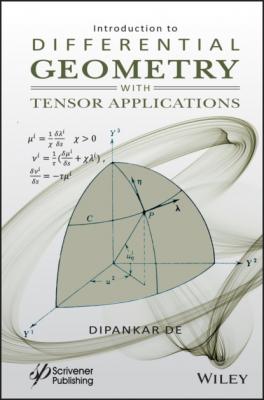Introduction to Differential Geometry with Tensor Applications. Группа авторов
Чтение книги онлайн.
Читать онлайн книгу Introduction to Differential Geometry with Tensor Applications - Группа авторов страница 12

Property 1.4.4.
(1.6)
(1.7)
Property 1.4.5.
Also, by definition,
In particular, when i = k, we get
Remark 1.4.1. If we multiply xk by
Example 1.4.1. Evaluate (a)
(1.8a)
(1.8b)
(b)
Example 1.4.2. If xi and yi are independent coordinates of a point, it is shown that
Solution: The partial derivative of ϕ in two coordinate systems are different and are connected by the following formula of Differential Calculus:
Since xj is independent of,
Hence, the result follows from (1.9a) and (1.9b).
1.5 Linear Equations
Let us consider n linear equations such that
where x1, x2, …. xn are n unknown variables.
Let us consider:
For the expansion of det |ai j| in terms of cofactors we have
where a = |ai j| and the cofactor of ai j is Ai j.
We can derive Cramer’s Rule for the solution of the system of n linear equations:
Now, multiplying both sides of (1.10a) by Ai j, we get
by (1.10b), we get, axj = biAi j.
From here, we can easily get
Example 1.5.1. Show that
Solution: By expansion of determinants, we have:
Which can be written as a1jA1j = a a1jA2j = 0 and a1jA3j = 0 [we know aijAij = a].
Similarly, we have
Using Kronecker Delta Notation, these can be combined into a single equation:
All nine of these equations can be combined into
1.6 Results on Matrices and Determinants of Systems
It is known that if the range of the indices of a system of second order are from 1 to n, the number of components is n2. Systems of second order are organized into three types: ai j, ai j,
each of which is an n × n matrix.
We shall now establish the following results:
Property 1.6.1. If